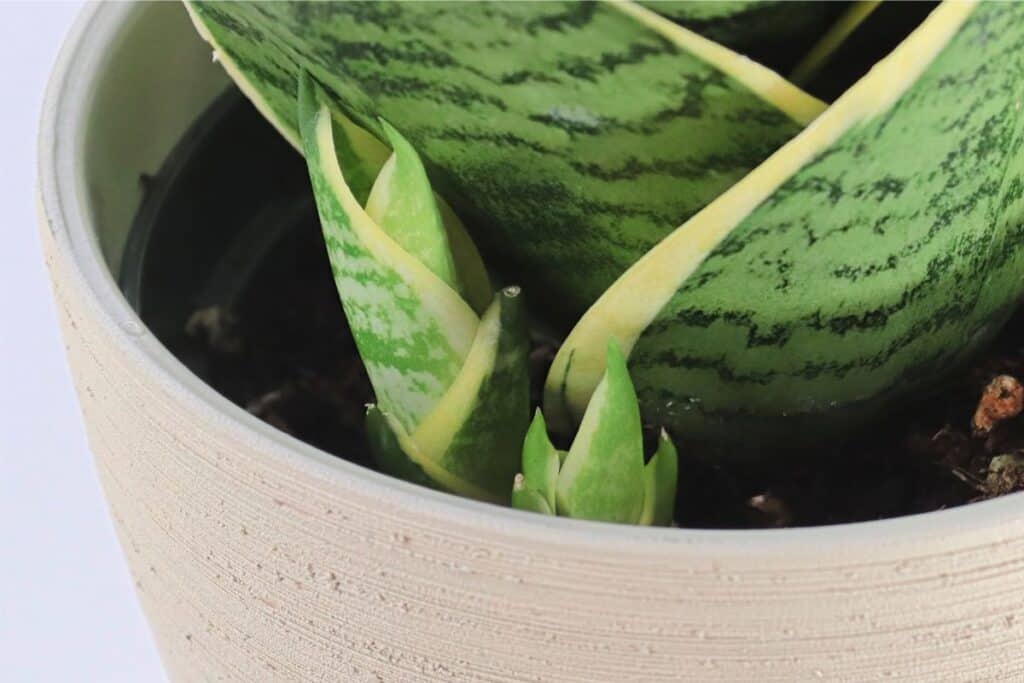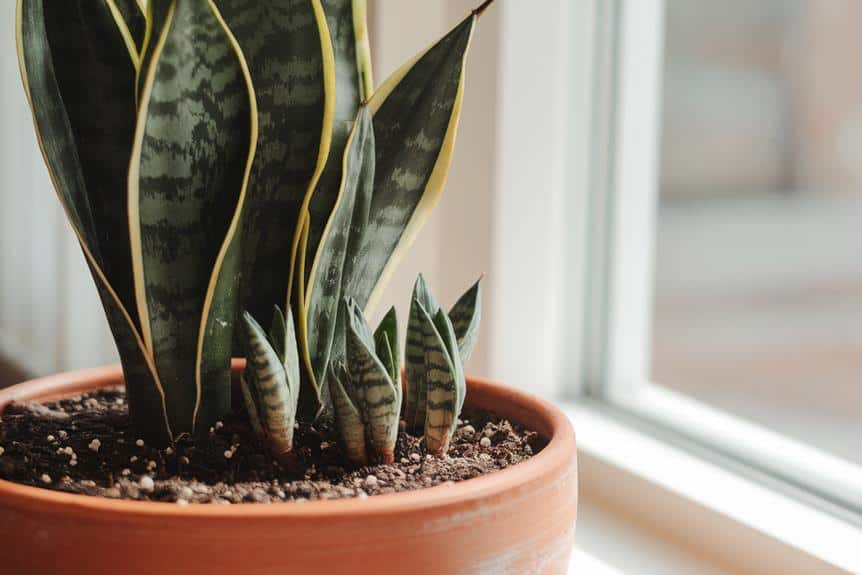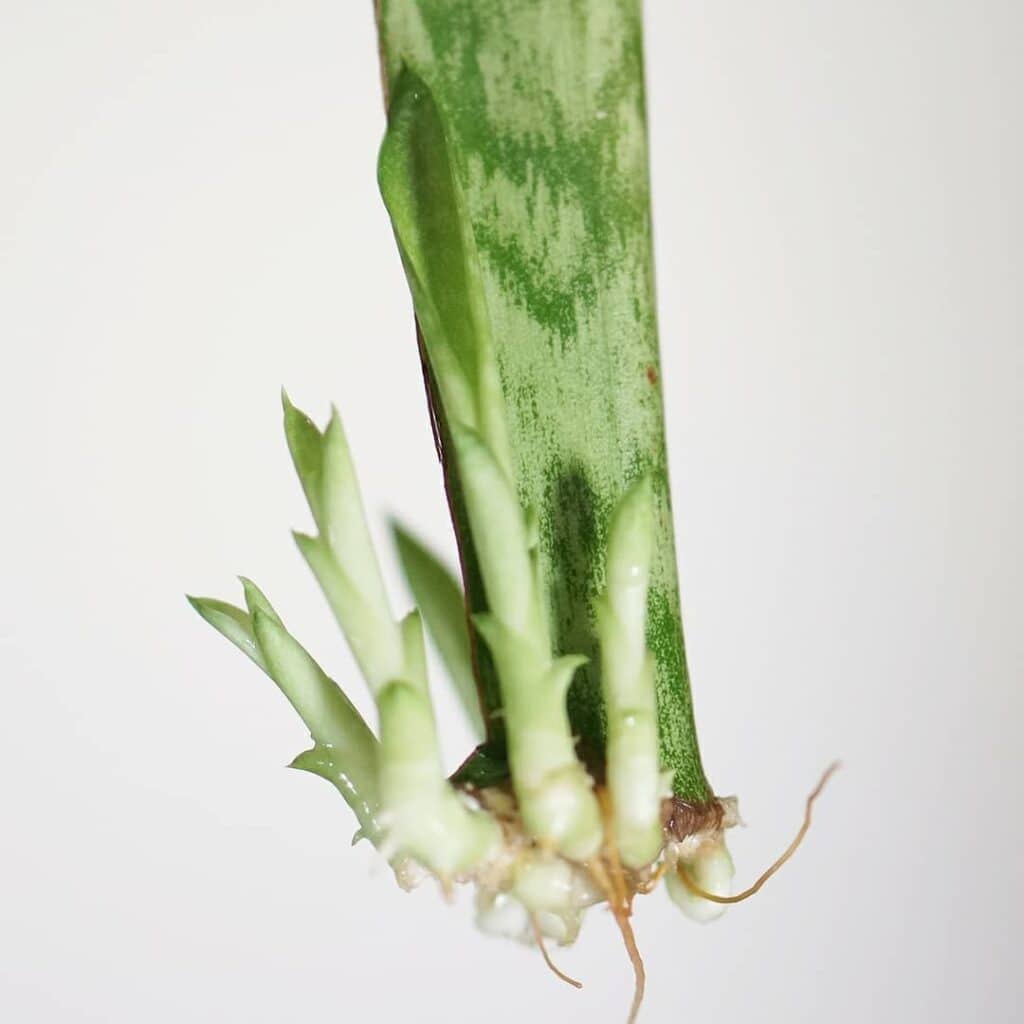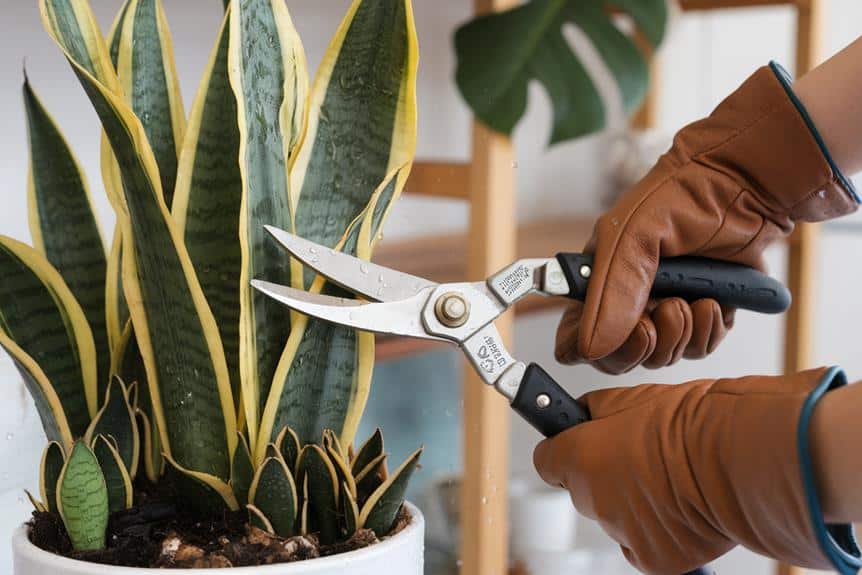How to Make a Snake Plant Produce Pups
Are you a proud snake plant owner looking to expand your collection? Snake plants are known for their easy-going nature, but did you know that you can encourage them to produce offshoots or “pups”? In this guide, we’ll share simple tips and tricks to help your snake plant thrive and multiply, allowing you to propagate new plants or share the joy with fellow plant enthusiasts. Get ready to unlock the secrets of snake plant propagation!

Contents
Optimal Growing Conditions
Four key factors contribute to ideal growing conditions for snake plants to produce pups: light, soil, water, and temperature. Provide your snake plant with bright, indirect light for 6-8 hours daily. Use well-draining, slightly acidic soil with a pH between 5.5 and 7.5. Water sparingly, allowing the soil to dry completely between waterings. Maintain temperatures between 70-90°F (21-32°C) during the day and no lower than 50°F (10°C) at night.
To encourage pup production, you’ll want to create a slightly stressed environment. Reduce watering frequency and allow the plant to become slightly root-bound. This mimics natural conditions that trigger survival instincts, prompting the plant to produce offspring. Fertilize lightly during the growing season with a balanced, water-soluble fertilizer diluted to half-strength. With patience and consistent care, you’ll soon see pups emerging from the soil.

Proper Watering Techniques
While maintaining ideal growing conditions is important, proper watering techniques play a key role in encouraging snake plants to produce pups. Water your snake plant sparingly, allowing the soil to dry out completely between waterings. This mimics their natural habitat and prevents root rot, which can hinder pup production.
During the growing season (spring and summer), water every 2-3 weeks, reducing to once a month in winter. Use room temperature water and apply it directly to the soil, avoiding the leaves. Guarantee your pot has drainage holes to prevent water from pooling. Overwatering can stress the plant and inhibit pup growth, so err on the side of underwatering. If you’re unsure, check the soil moisture with your finger or a moisture meter. By following these watering guidelines, you’ll create perfect conditions for your snake plant to produce healthy pups.
Fertilization Strategies
To boost your snake plant’s pup production, proper fertilization is essential. Use a balanced, water-soluble fertilizer with an NPK ratio of 10-10-10 or 5-5-5 during the growing season, typically spring and summer. Dilute the fertilizer to half-strength to avoid overfeeding, which can harm your plant. Apply the fertilizer once a month, ensuring the soil is slightly moist beforehand.
During fall and winter, reduce fertilization to once every two months or stop completely, as the plant’s growth slows down. Overfertilizing can lead to salt buildup and root burn, hindering pup production. If you notice brown leaf tips or slowed growth, flush the soil with water to remove excess salts. Remember, snake plants are hardy and don’t require frequent fertilization. By following these guidelines, you’ll provide the nutrients necessary for healthy growth and pup development without overwhelming your plant.
Root Division Method

The root division method offers a hands-on approach to propagating your snake plant and encouraging pup production. To begin, carefully remove the plant from its pot and gently separate the root ball. Look for natural divisions or smaller offshoots that have developed their own root systems. Using a clean, sharp knife, cut through the rhizome to separate these sections. Guarantee each division has at least one healthy leaf and some roots attached.
Replant these divisions in fresh, well-draining potting mix, making sure not to bury the leaves. Water sparingly and place in indirect light. This method not only creates new plants but also stimulates the parent plant to produce more pups. Be patient, as it may take several weeks for new growth to appear. With proper care, you’ll soon have multiple thriving snake plants to share with others.
Leaf Cutting Propagation

Propagating snake plants through leaf cuttings offers a simple and effective method for producing new pups. To start, select a healthy leaf and cut it into 2-3 inch sections using clean, sharp scissors. Allow the cuttings to callus for 24 hours, then plant them vertically in well-draining soil, ensuring the bottom end is inserted about an inch deep.
Keep the soil lightly moist and place the cuttings in bright, indirect light. It’s essential to maintain a warm environment, ideally between 70-80°F. Within 3-4 weeks, you’ll notice roots forming at the base of the cuttings. As the roots develop, new pups will emerge from the soil.
Be patient, as this process can take several months. Once the pups are a few inches tall, you can separate them from the parent leaf and pot them individually.
Rhizome Separation Technique
While leaf cuttings offer one propagation method, rhizome separation provides another effective way to produce snake plant pups. To begin, carefully remove the plant from its pot and gently brush away excess soil. Examine the rhizomes, which are the thick, underground stems connecting the plant’s shoots. Using a clean, sharp knife, cut through the rhizomes to separate the plant into smaller sections, ensuring each section has at least one healthy shoot and roots.
Allow the cut surfaces to dry for a day or two to prevent rotting. Then, replant each section in well-draining soil, placing them at the same depth they were originally growing. Water sparingly until new growth appears, as overwatering can lead to root rot. With proper care, these separated sections will develop into new, independent snake plants, ready to brighten someone’s home or office space.
Light Requirements
Proper lighting plays a critical role in encouraging snake plants to produce pups. These resilient plants thrive in bright, indirect light, but they can tolerate low-light conditions as well. To promote pup production, place your snake plant near a north or east-facing window where it’ll receive ample indirect sunlight throughout the day.
If you’re using artificial light, position grow lights about 6-12 inches above the plant for 12-14 hours daily. Avoid exposing your snake plant to direct sunlight, as it can scorch the leaves and hinder growth. In offices or rooms with limited natural light, you can still cultivate snake plants successfully, but pup production may be slower.
Remember to rotate your plant occasionally to guarantee even growth and prevent it from leaning towards the light source. By providing ideal lighting conditions, you’ll create an environment that encourages your snake plant to produce healthy pups.
Pot Size and Soil Composition
The right pot size and soil composition are crucial factors in encouraging snake plant pup production. Choose a pot that’s slightly larger than the root ball, allowing for growth but not excessive space. A pot that’s too large can lead to overwatering and root rot. Opt for a well-draining potting mix, combining equal parts potting soil, perlite, and coarse sand. This mixture guarantees proper aeration and prevents water retention.
When repotting, gently loosen the root ball and remove any damaged roots. Place the plant at the same depth as it was in its previous container. After repotting, water sparingly and allow the soil to dry between waterings. This encourages the plant to focus energy on producing pups rather than excessive foliage growth. Remember to fertilize lightly during the growing season to provide necessary nutrients for pup development.
Pruning and Maintenance Practices

Over time, pruning and maintenance play a crucial role in promoting snake plant pup production. To encourage your snake plant to produce pups, remove any dead or yellowing leaves regularly. This allows the plant to redirect energy towards new growth and pup development. When pruning, use clean, sharp scissors to make clean cuts close to the base of the leaf.
You’ll want to maintain a consistent watering schedule, allowing the soil to dry out between waterings. Dust the leaves gently with a damp cloth to keep them clean and healthy. Rotate your plant occasionally to guarantee even light exposure, which can stimulate growth on all sides. During the growing season, apply a balanced, water-soluble fertilizer every 4-6 weeks to provide essential nutrients for pup production. With proper care, you’ll soon see new pups emerging.
